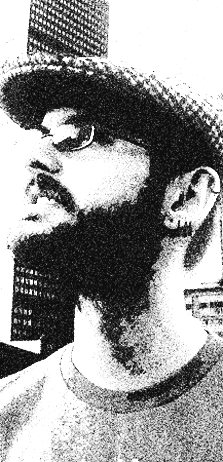Last Resort
Last Resort is a modified game of chess in which two opposing sides wage war to protect civilians and territory. The Bleached side consists of eight pawns, two rooks, two knights, two bishops, and a nuke; the Oiled side has eight pawns. Neither side has a king or a queen. The game itself has six civilians. The chessboard has alternating walnut islands and black sandpits. The game of chess traditionally represents war between kingdoms, and the kingdoms have equal power, observe the same rules of engagement, and pursue the same end: to overpower the opposing king. The distribution of power in real war, however, has always been asymmetrical. War today is rarely an attempt to unseat a king, and contemporary wars are not fought by military forces of equal strength; the differences between sides may be enormous. Traditional rules of engagement are not necessarily observed. The conflict may not even involve one nation against another nation, and the distinction between military and civilian participants is blurred. Last Resort modernizes the game of chess by mimicking these aspects of real war. Each side has its own code. The Bleached side, which represents strictly regimented soldiers, wages war to protect the citizens of a foreign territory; the objective is to liberate a people believed to be oppressed. The Oiled set of pieces represents autonomous soldiers who fight to protect their freedoms and to recruit citizens to support their causes. Players on both sides seek to protect life and freedom, but they do so for very different reasons. One fights to free a foreign people in another land; the other fights to be a free people in their own land.
The asymmetry of war is encoded in the pieces and their movements. The Oiled player has eight pawns that move, at the discretion of the player, like a rook, knight, or bishop, though no more than three squares at a time. The Bleached player has eight pawns, two rooks, two knights, and two bishops that move like conventional chess pieces, plus one nuke that moves one square in any direction. The game also has six civilian pieces that either player may move diagonally one square at a time. Players take turns moving one of their own pieces or one of the civilian pieces. Players can move pieces to empty squares or squares occupied by opponent or civilian pieces. Moving to an occupied square removes the occupant from the board. Oiled pawns and the nuke may be detonated or moved. To detonate an Oiled pawn, it and all adjacent pieces are removed from the board. Detonating the nuke removes the nuke and all pieces within three squares of the nuke. During a turn, a player can either move or detonate a piece but cannot do both. The first player to move four civilians to the row closest to their side of the board wins. If three or more civilians are removed from the board, the player who removed the fewest civilians wins.
I've created a situation where the citizens are the most valuable piece of the game, the key to winning is not strictly through annihilating your opponent, but through the people effected most by the conflict, those caught in the middle. In the game players can choose to play justly and protect the citizens. Or manipulate civilian loses to gain support through deception. Further, its an attempt to humanize the act of a suicide/ martyr bombing an act done out of desperation in hopes to sway the odds of an uneven playing field.
Exhibitions
- Learn to Play, Euphrat Museum of Art, De Anza College 10/4/10–11/24/10
- Preview of Learn to Play, Zero1 San Jose Bienniel 9/17–19/10
- JP Open Studios' Urbano Faculty and Staff exhibit, The Urbano Project Gallery 9//09
- FirstWorksProv festival: PIXILERATIONS [v.5]: Fragments & (W)holes, Sol Koffler Gallery 10//08
- Rhode Island School of Design's 2008 Annual Gradute Thesis Exhibition. 5/20/08-6/1/08


